Cats may be known for being aloof, but that doesn’t necessarily mean that they aren’t friendly folk, by nature. All cat lovers know that a cat will likely come to you when they’re ready and are extremely unlikely to ever want to be fussed unless it’s on their terms. Of course, some cats are naturally friendlier, while others just want to be left alone.
There’s absolutely nothing wrong with this- however if you have the chance, why not use a few tips and tricks along the way to help encourage your cat to be friendlier. The following tips are perfect for families of small kids who want to inspire their kittens to be more relaxed around busy areas, as well as those cat owners who really would just like to be as close to their cat, as possible.
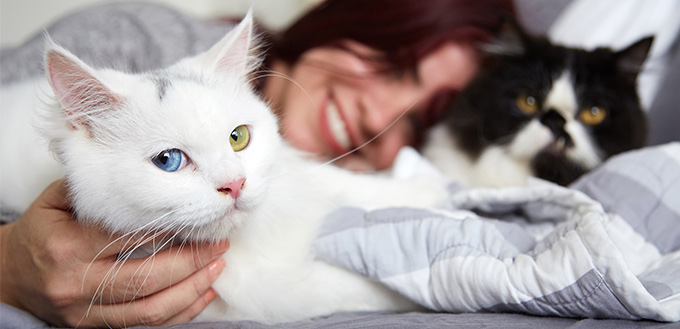
1. Always Be Available
To start, the biggest change will be led by yourself. So, you’ll need to be around for your cat, any time they want or need you. This is easier when they’re kittens as their inquisitive nature still won’t be honed enough to keep them too far away from you.
Interact with your kitten by playing with them, feeding them their favorite foods and treats, and chatting away with them. In the end, they’ll be so used to your company that they’ll treat their proximity to you as a natural part of their lifestyle.
Related Post: Best Cat Treats
2. Be Gentle
Cats are naturally very sensitive creatures, so they don’t respond well to loud noise, being repeatedly grabbed and being punished for being, well, a cat. If you want to encourage your kitty to be a lap cat, then you’ll need to be gentle and kind to your cat. Cat’s respond well to love, warmth and a feeling of safety- all of which you should be providing for your fur baby.
If you catch your cat being naughty, take a moment to ensure that you don’t raise your voice or do anything to scare them. If you’re really struggling with some of the naturally frustrating things a cat may bring into your home, such as bringing home dinner or scratching your furniture, there are ways to deal with this that don’t include negative reinforcement.
3. Make Time For Playtime
We’ve mentioned that you need to be there for when your cat wants to play, but don’t be afraid to initialize playtime too! It’s pretty much impossible that your cat will want to cuddle all the time, so be sure to make the extra effort to burn off some of that extra energy by grabbing some great cat toys and having some fun.
Kittens are especially big fans of a little playtime, so if you have a young cat be sure to add in some extra playtime when you get home. You can even add in some tasty treats for a well-behaved kitten that plays nicely.
You may also like our articles on the Best Interactive Cat Toys and Best Kitten Toys.
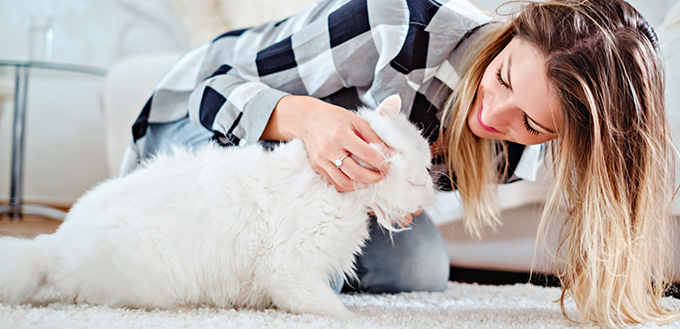
4. Be Affectionate
While this doesn’t mean grab your cat and go to town with the stroking, it is a really good idea to encourage your cat to stay alongside you when you’re sat down, watching the TV or similar. You want to show your cat that you are a trustworthy human who will never harm her, so you should begin with a tempting treat or two. Enticing her to come close to you, in order to gain a reward will allow them to associate you with positive feelings and a full tummy.
You can also gently show some affection to your cat when they’ve gone for a snooze. Showing them that you only want to give them a stroke when they’re sleeping will show them that you aren’t looking to hurt them, when they’re most vulnerable. If your cat moves away, let them- eventually they’ll learn that their affection is a choice- and they’ll be more likely to return to you.
5. Train Your Kitty
There’s no deeper connection than the passing of knowledge from one to the other- and one of the best forms of this is through training. The easiest thing to teach a cat is to come when called- simply begin by calling their name as you hold out a treat. As they come toward you, say their name again in a positive but relaxed tone.
As they become more confident, and then begin to go outside, be sure to keep giving them treats for their safe return. This will ensure that they don’t wander off too far, while also knowing that their favorite human has a treat for them, any time their name is called by you. Essentially, this will help them associate you with food, happiness and warmth (both figurative and literal, as they return to their home), making your cat much happier to be around you and therefore wanting to spend more time with you.
6. Socialize
If there’s one thing you can take away from all of this, remember that, in order to have a happy cat, you’ll need to socialize, socialize, socialize! This can be with yourself, with strangers or with other animals. Just be sure to always introduce your kitty to new environments in a gentle manner and allow them to find a little hiding spot, where necessary.
Cats who spend more time with animals such as dogs will eventually learn that these excitable creatures aren’t a threat as much as they enjoy playing. Meanwhile, a cat who spends a lot of time around the family will know that the smaller humans mean no harm and the big ones come with lots of food. All-in-all, this will lead to them being a happier, more confident cat that enjoys the kindness of strangers.
It’s important to note, here, that you’ll need to ensure your cat is always given room to breathe. Forced interaction is not socialization and cats should always be given a little hiding place, when introduced to new areas or new people. Allow them to come out and socialize on their own terms- they’ll be grateful for the helping hand.
7. Don’t Treat A Kitten Like An Adult
Just like teenage and adult differences in us humans, cats and kittens have different wants and needs that you should be aware of. For example, a kitten will need more frequent meal times that are smaller, as they’ll be at the age of rapid growth. This is a great excuse to encourage your kitten to hang around you more often, since they can expect food and care from you.
Meanwhile, an adult cat may get into the habit or spraying around the home, if they’re not neutered. They’ll also need a lot of patience to handle their new habits, such as bringing home unwanted animals and going for a wander around the neighborhood. Becoming angry at these, entirely natural, behaviors will only lead to a level of resentment from your cat- so keep your cool.
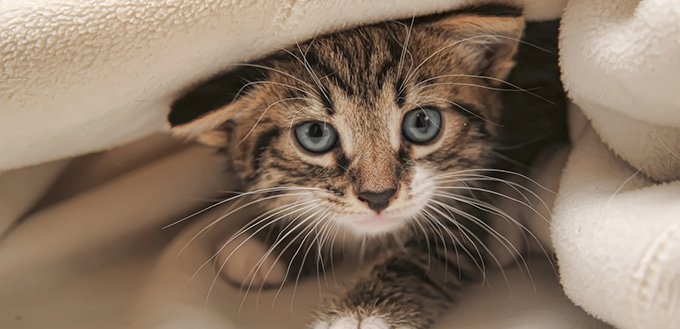
8. Keep On Top Of Their Health
A cat will only ever be as friendly as they are happy- and one of the main aspects of keeping a cat happy is to ensure they are at their healthiest. Always ensure that your cat is at a healthy weight, with plenty of food and water. Allow them to use up their energy on scratching posts or cat trees, or by letting them outside for a stroll, regularly.
Check out our guide on the Best Cat Scratching Tower.
If you have any concerns at all, take your cat to see the vet. Since cats can’t tell us how they’re feeling or if they’re in pain, it’s always best to get any suspicious symptoms looked at. This is most important when it comes to a cat being grumpy- especially if your cat is otherwise friendly. A grumpy cat can be a sign of your kitten being in pain, which can be due to a variety of reasons, so be sure to get them checked out as soon as possible, if you notice something off with your kitten.
Long story short, if you want to raise a loving, friendly cat then you’ll need to be loving and friendly, yourself. Cats will take your lead on this, so if you don’t fancy spending much time with them throughout the day, then don’t be surprised when they get older and don’t want to spend much time with you either.
Take a look at our New Cat Cheat Sheet.
Which Are The Friendliest Cat Breeds?
While you should be able to encourage friendliness through the tips above, it does no harm to find a cat who is more naturally attuned to being friendly, simply by their nature. These cats have a natural friendliness and charm that is distinct to their breed and make for great family pets.
Maine Coon
This gentle giant is one of the largest breeds in America. However, don’t let their size fool you- they are also one of the calmest, most loving domestic creatures available. The Maine Coon loves a good cuddle with the whole family and is as playful as they are loving. They are also known for being a bit of a shadow- often following their owners from room to room, in a manner similar to a dog.
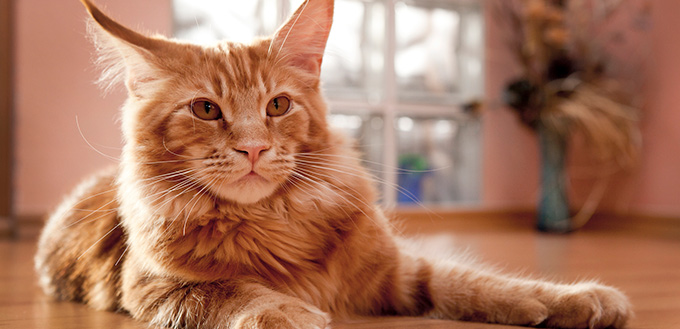
Siamese
Despite getting a bad rap in certain animated films, the Siamese cat is actually one of the friendliest breeds out there. They’re incredibly affectionate and love to lounge around the house, although they are also known to be very loud- so you’ll certainly know when they’re not happy with their situation.
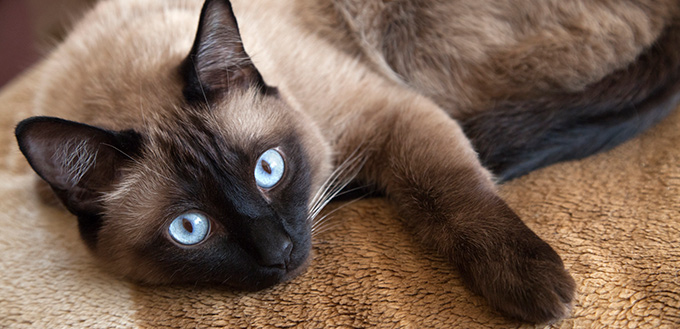
Burmese
A cat that loves to sit on your lap and receive cuddles all day long. This purr-y breed are known for wanting to be around their owners 24/7, so they’re not great pets for those who are out all day and don’t have much time for a cat. However, if you show a little love and lots of cuddles, they’ll happily lounge around near their owners until you forcibly remove them. Burmese is also known for being a very clean breed, so it’s a double-bonus for familial owners.
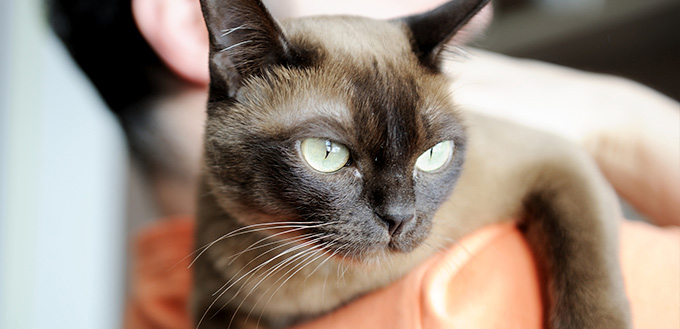
Sphynx
The Sphynx cat gets a bad rep to their heritage of being bred to be furless, however they recently came out on top as the number one, friendliest cat breed. Eager to please and a bundle of fun, these cats are always keen to spend time with their owners and can happily live out their lives as lap cats.
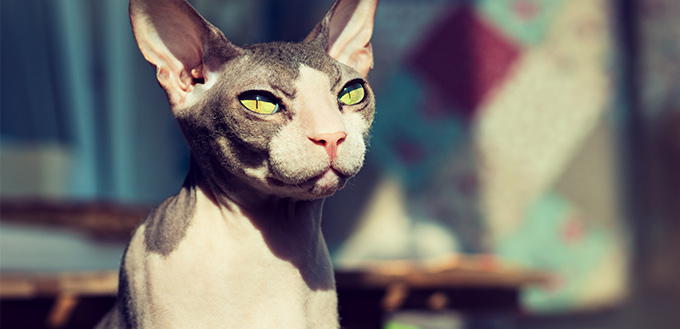
Ragdoll
Probably one of the most adorable breeds around, the Ragdoll cat loves to be loved. If you can handle all the extra shedding that comes from their lovely long fur, you’ll love having a Ragdoll around the home. They’re one of the most chilled out cats you’ll find today, often wanting to follow their owners from room to room, not unlike the Maine Coon. With one, big difference- Ragdolls keep their kitten-like nature well into old age and tend to be much smaller than their Coon cousins.
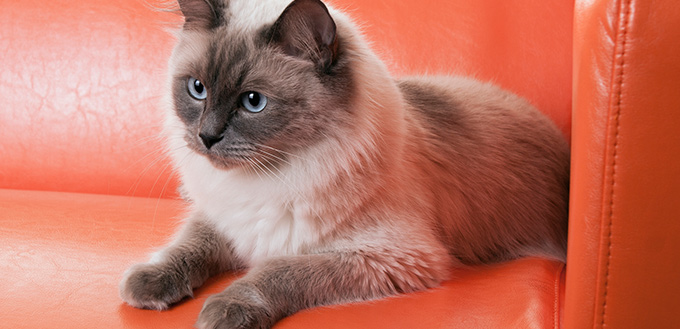
Bombay
Bombay’s are known for taking their lead from their owners- so, if you’re a very active person who likes to get out and about, it’s very likely your Bombay cat will want to do the same. Meanwhile, if you’re more of a couch potato and like to spend your evenings lounging around on the sofa, the Bombay would totally be up for that, too. Despite looking like a tiny panther, your cat will be much more sociable and loving and come up as one of the friendliest cat breeds available.
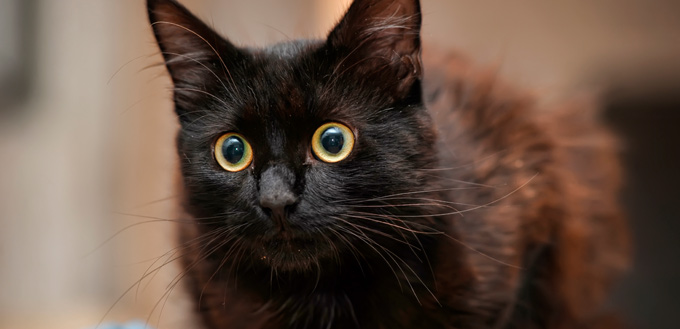
Ocicat
Another tiny version of a wild feline, the Ocicat looks like a miniature leopard- although you’ll be please to note that they’re much friendlier than their wild cousins. They are confident without being overbearing and love to have a good stroke. They may not necessarily be a lap cat- but they’ll definitely be one of the friendliest cats you’ll ever meet.
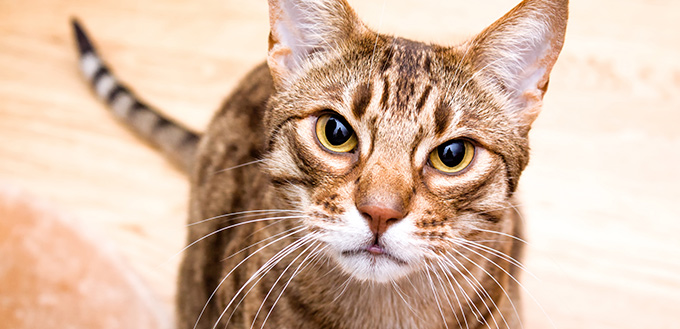
Related Post: Introducing Cat to Baby – Keep Baby Safe and Kitty Secure
Source:
- Maria Trimarchi, 5 Things You Can Train Your Cat to Do (Really), HowStuffWorks






My problem is twofold. A tuxedo cat showed up and it spit at me at first. I got to pet him, named him Tuxie and tried to take him inside. He howled loudly all night long.
I found 4 kittens had showed up with him, 2 light gray, 1 black & 1 tuxedo like him. They are very scared & run away. I am feeding them & trying to play with them. I need them to be socialized so I can look for homes for them. Anyway to speed up the process? I try every day but they are still scared & living under my deck. We are moving soon & I do not want to leave them there to fend for themselves.